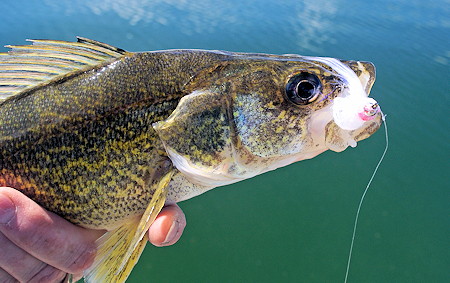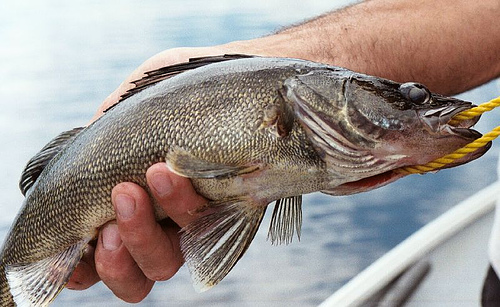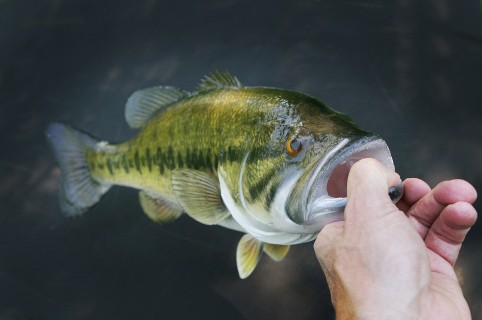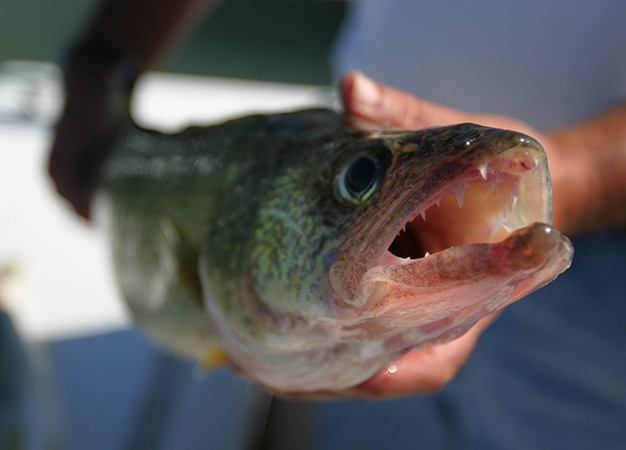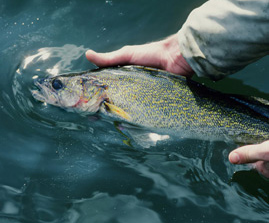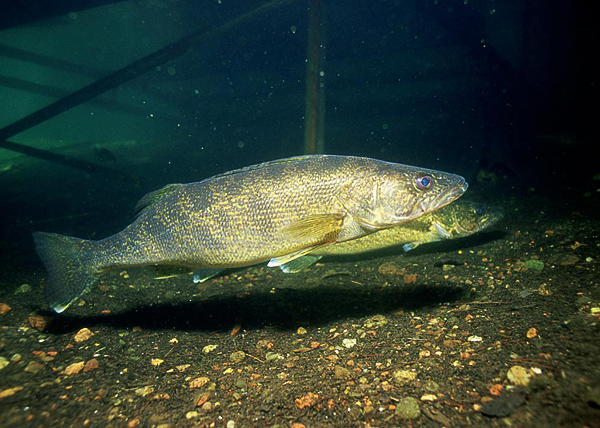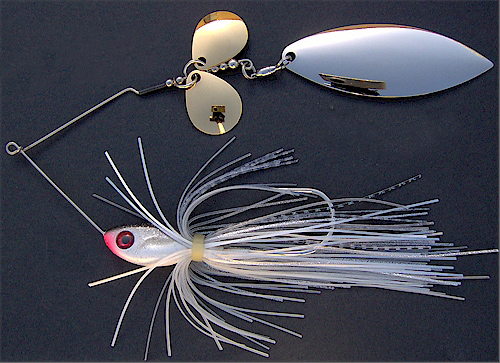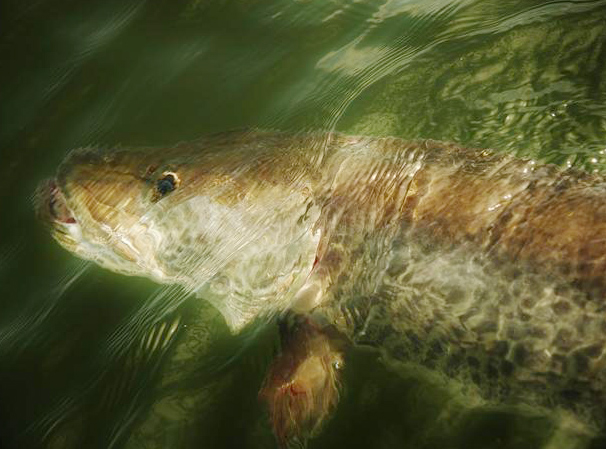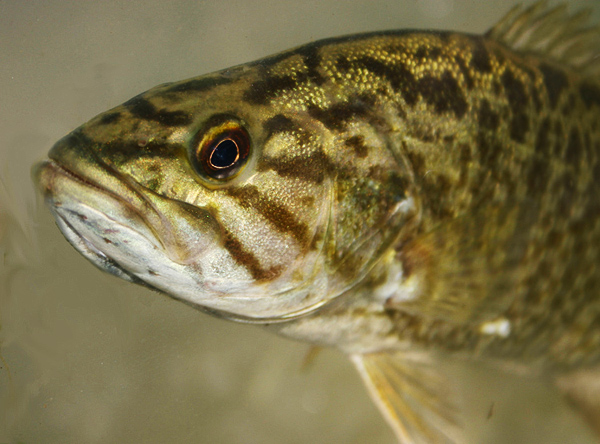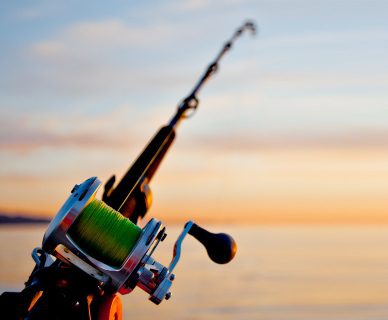By Gord Ellis
Bootail Island – so dubbed after a certain lure worked well there – used to be one of my favorite muskie spots on Lake of the Woods. Kenora’s Bill Friday and I always left the little pile of rocks as our ace in the hole.
Just offshore, it sported a shallow saddle covered with weeds so thick you couldn’t drive a boat through without stalling the motor. The salad was a mix of cabbage, coontail, lily pads, and stuff that looked like cooked spinach. It was slop. We preferred working jerkbaits or bucktails over clean reefs or reed-topped rock piles, but during summer and early fall Bootail always held a muskie or two, so we fished the slop and caught some beauties. One great thing about Bootail’s slop was that it was too thick for other muskie anglers to consider. Sadly, the tangle of weeds disappeared about 5 years ago, a victim of the ravenous Rusty crayfish. Neither Bill nor I have seen a fish at Bootail since, but the lessons learned there have not been forgotten.
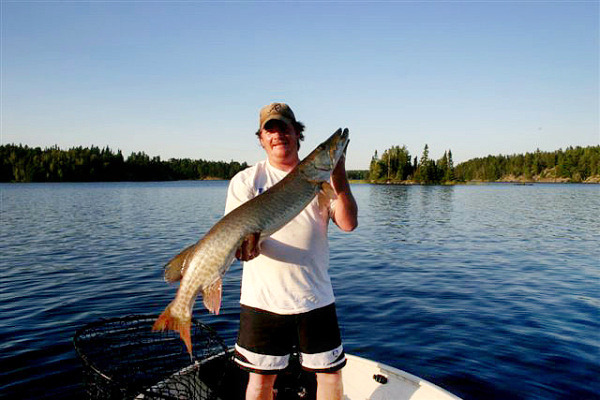 Fishing the slop for muskie requires patience. You’re going to be cleaning hooks, spinner clevises, and leaders of weed. It can drive you nuts, if you let it, but if you’re willing to put up with a bit of hassle, fishing the slop is worth the effort.
Fishing the slop for muskie requires patience. You’re going to be cleaning hooks, spinner clevises, and leaders of weed. It can drive you nuts, if you let it, but if you’re willing to put up with a bit of hassle, fishing the slop is worth the effort.
In some systems muskie suspend in open water and sit off bare rock piles, but overall they’re weed-loving beasts. A bed of cabbage, however, is different than a slop-filled shallow bay. As a rule, muskie in slop are less aggressive than fish in deeper water. Studies have found that in deep lakes such as Eagle Lake in the Patricia Region Canada’s Heartland, muskie use shallow, weedy bays as digestion areas. During overcast, stormy fronts, muskie move out to deeper water and feed on cisco and whitefish. As the weather stabilizes and the sun comes out, the well-fed fish slide into the slop to digest their food. Muskie are neutral or inactive at this time, but a muskie that’s finished digesting its meal and starting to feel hungry is catchable. At least that’s the theory. You know what muskie are like.
In shallow, weed-filled lakes like Scugog in southern Ontario, the situation is a bit different. Muskie feed and live near heavy weeds most of the time. They’re aggressive more often.
Good muskie-holding slop is usually within a few hundred yards of deeper water. Large shallow saddles, bends in rivers, oxbows, back bays, and sand flats are all worth a poke when seeking summer muskie. Pay close attention to areas in slop that have an opening. For instance, if weeds surround a rock hump, look for an area of the rock that’s underwater. This weed-free opening might provide a feeding window that muskie will use to ambush prey wandering out of the foliage. While most muskie will be near the deep edge of slop, big fish have been known to hold well back in the heaviest weeds, if there’s an easy route into them. Don’t pass up working the really thick stuff. When muskie are in the slop, it’s more difficult to get them to pay attention to a lure. As often as not, there’s just enough of a window above them to see any fish, rodent, or reptile that might move by. You need to fish quickly and loudly to entice muskie out of the tangle.
Bulging an original bucktail spinner just under the surface is the number-one technique for fishing muskie in slop, especially in summer when a lake is flat and the sun is hot. To get a spinner bulging, reel as quickly as you can. Run the bucktail just under the surface of the water, with the blade pushing up a wake. The commotion and vibration are tough for even the sleepiest muskie to ignore. This technique requires a bait-casting reel with at least a 5:1 gear ratio. Bulging with anything less will burn out your arm in short order. Bulging a spinner is easier if you engage the reel and start retrieving just before the lure hits the water. This also makes setting the hook easier on fish that strike immediately.
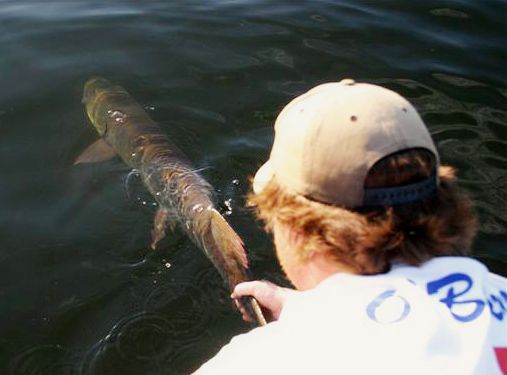 If I had just one choice of lure for bulging the slop, it would be a straight-shaft bucktail trolling spinnerbait with a large Colorado blade. The previously mentioned Bootail is one of my favourites. It features a fire-red Colorado blade and a black marabou feather dressing. The marabou pulses nicely as the spinner bulges over the weeds. Other good slop spinners include the Peterson Tackle Inhaler, Grim Reaper Bulging Buck, and Mepp’s Musky Killer. Some bulging spinners feature two Colorado blades for extra lift.
If I had just one choice of lure for bulging the slop, it would be a straight-shaft bucktail trolling spinnerbait with a large Colorado blade. The previously mentioned Bootail is one of my favourites. It features a fire-red Colorado blade and a black marabou feather dressing. The marabou pulses nicely as the spinner bulges over the weeds. Other good slop spinners include the Peterson Tackle Inhaler, Grim Reaper Bulging Buck, and Mepp’s Musky Killer. Some bulging spinners feature two Colorado blades for extra lift.
Safety-pin-style spinners like Fudally’s Stump Hawg and the Northland Tackle Bionic Bucktail are also good bets. But any oversized spinnerbait with fat blades can be bulged over weeds or worked through them. I let safety-pin spinners helicopter occasionally by slowing the retrieve when the lure reaches a pocket in the weeds. The slow rotation of the spinner as the jig body drops is a deadly trigger on following fish. Add a 4-inch white twister-tail grub body to the hook for even more muskie attraction.
Top-water is another great option for slop. The strike of a paddle-length muskie on a surface lure is one of the most awesome spectacles in freshwater fishing. Yet, muskie occasionally take a top-water bait with barely a ripple. My first top-water muskie struck a Hellraiser Cherry Twist as I buzzed it over a thick mat of coontail. There was a slight bulge in the water and the lure just disappeared. I was shocked to find a 42-inch (106.7-cm) muskie had sucked the lure up like a trout taking a dry fly. Muskie are full of surprises. The best top-water slop baits have an in-line prop or spinner blade which churns the water when retrieved. Proven lures include the Cherry Twist, Hi Fin Splashtail, Poe’s Awaker, and Suick Cisco Kid Topper.
Muskie in the slop generally like a fast top-water retrieve. Make sure those blades are really throwing water and making a lot of noise. I prefer a steady retrieve, so that muskie can easily key in on the lure. If a fish follows or boils, zig-zag the lure as it nears the boat and keep retrieving. As often as not, a fish will come back.
Finally, make sure your equipment is up to the task of fishing in extreme weeds. I prefer a one-piece medium-heavy-action 7-foot muskie rod and a baitcasting reel loaded with 40-pound-test Dacron. In lakes with muskie that seldom top 20 pounds (9 kg), you can get away with using a bass flipping stick and 20-pound super braids, but I wouldn’t go any lighter. If you hook a lunker lunge in slop, extracting it will be a challenge. In many cases, you’ll end up with a weed ball weighing as much as the fish. This is part of the game when fishing slop.
If getting the maximum number of clean casts per hour is your idea of perfect muskie fishing, the slop isn’t for you. If, however, you don’t mind getting down and dirty for your fish, it’s the place to be. Remember, the bigger the mess, the bigger the muskie.



